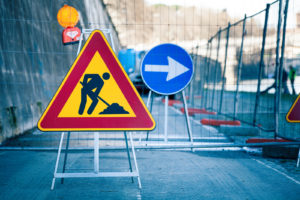If it’s occurred to you more than once lately that Sydney has become one big construction zone, you aren’t alone. Cranes seem to have a permanent place in the skyline as the number of construction projects, from private homes to commercial buildings, keeps growing.
Driving in Sydney under normal conditions presents a fair share of danger. Throwing the many construction zones into the mix results in even more dangerous conditions. Not only does driving in these areas put you at greater risk of being in an accident; it also costs you the time you need to get where you’re going!
Once the upgrades are complete, driving in Sydney will be a much better experience. Meanwhile, the tips below can help keep your time on the road safer and under control.
1. Know Where Projects Are Going On
A number of projects in the north region are expected to last extensively. Some will only be active when the weather permits. You can check for road work updates before planning your driving route. Some to be aware of include:
- Northern Beaches Hospital Road
- Starkey Street Pedestrian Bridge
- Frenchs Forest Road and Naree Road Traffic Changes
- Gas Main Installation Work on Forest Way/Warringah Road and Rabbett Street
2. Pay Attention to Signs
As you can tell from tip #1, construction projects often grow and spread out from the initial area. Always pay attention to signs and follow instructions. This is especially true for speed limits, even if you don’t think the slow speeds are necessary.
3. Bicyclers and Pedestrians Need to Heed Warnings Too
Construction zones can be even more dangerous to pedestrians and bicyclers. Try to avoid zones where debris can fall from overhead. If traffic is moving slowly, don’t assume it’s safe for you to weave in and out between vehicles. These areas require greater efforts at safety; not less.
4. Don’t Spend Time in Traffic Talking on Your Cell Phone
Pay attention to what is going on around you, even if you are temporarily at a standstill. Distracted driving is never a good idea.
5. Leave Early and Stay Calm
Planning your route and allowing time for heavier traffic can make delays less stressful. Getting upset and trying to get around other cars isn’t going to get you to your destination any faster. It’s only going to make the situation more dangerous for you and others.
Once the construction projects in Northern Sydney are complete, driving will be a lot more pleasant. In the meantime, planning ahead and obeying the laws will help prevent accidents.

